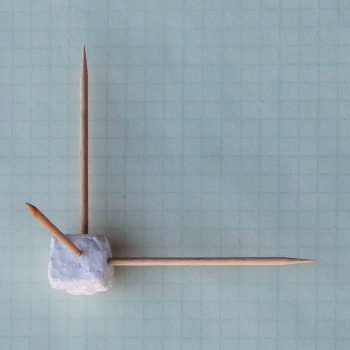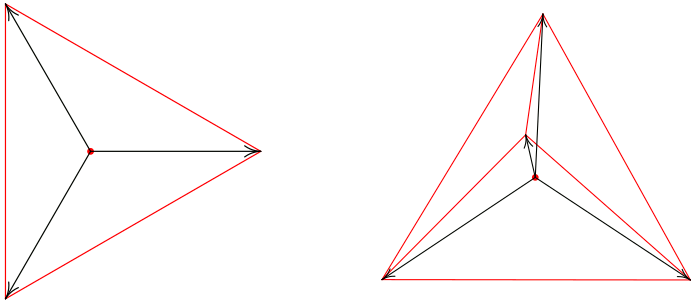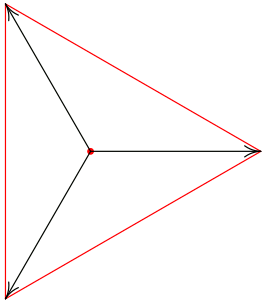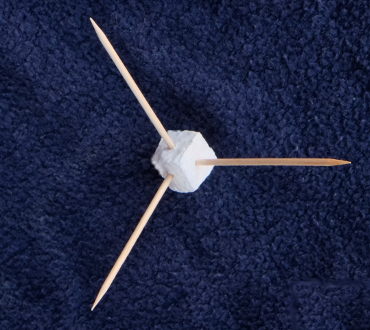Cartesian coordinates use a set of mutually orthogonal unit
basis vectors to span a space. In the photo to the right,
the familiar 3‑D Cartesian unit vectors
ı⃗,
ȷ⃗,
k⃗ are modeled with toothpicks
stuck into a styrofoam origin. These vectors satisfy the definition of a
basis
for 3‑space:- they are
linearly
independent
(there's no way to express any of the basis vectors as a
linear combination of the others) - they
span 3‑space
(any point in 3‑space can be expressed as a
linear combination of the basis vectors)
Together, those two properties provide that any
point in 3‑space has unique Cartesian coordinates
(x,y,z).
|
 |




